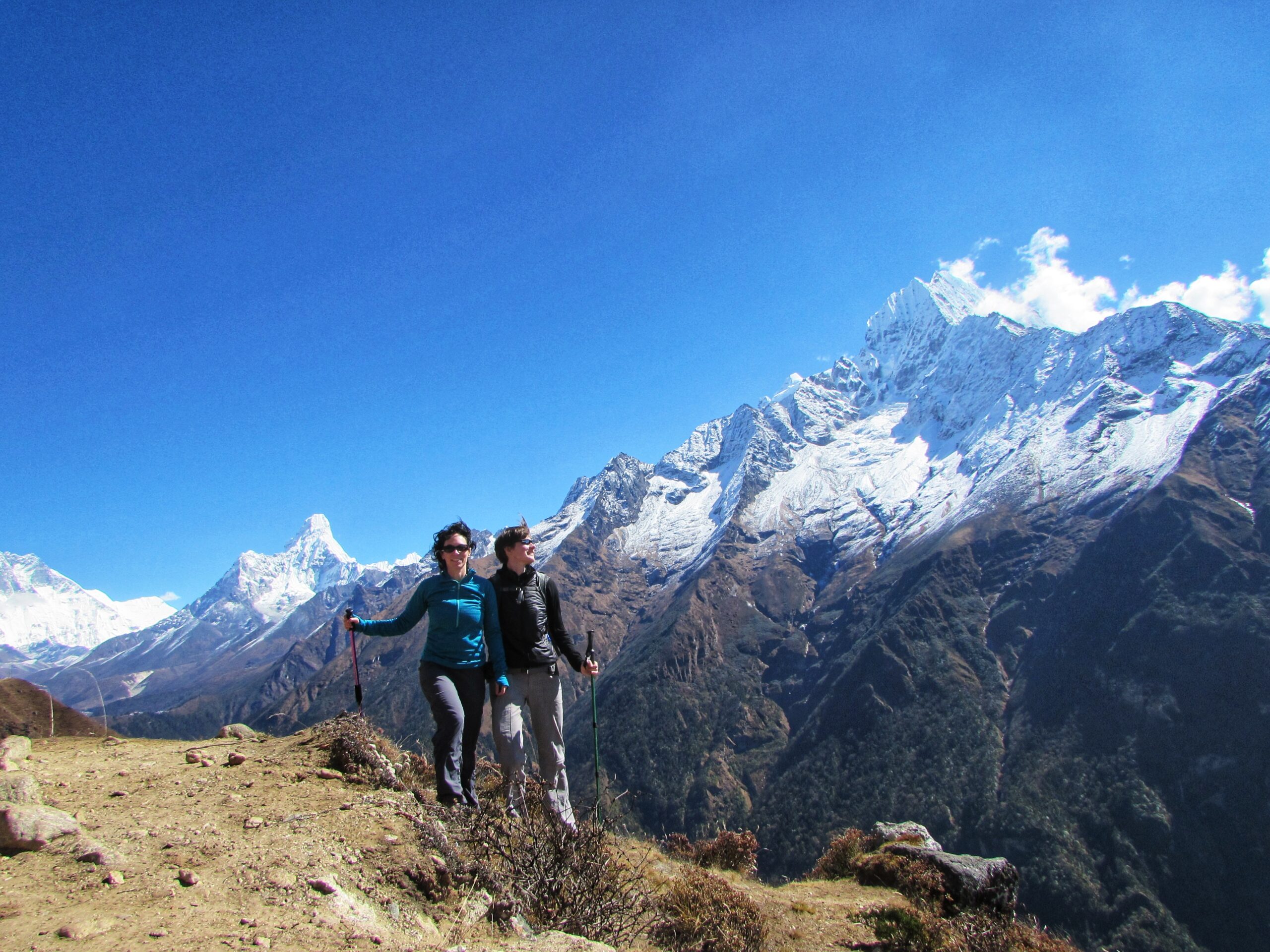
Medical Coverage Abroad
What to Look for in International Medical Insurance
It’s everyone’s least favourite part of planning for travel. And yet it could turn out to be the most important. What’s the right type of international health insurance plan to cover the needs of permanent nomads or long-term travellers? And, just as important, how big a bite will it take out of your monthly budget?
We usually receive questions about our insurance plan when we share our cost of living videos, which provide breakdowns of everything we spent for a month in whatever destination we happen to be living in. Viewers have noticed that we’ve managed to keep our insurance costs down, and yet we still have coverage that meets our needs wherever we are in the world.
With that in mind, we’re sharing exactly what type of insurance we have as full-time travellers with no permanent home anywhere in the world.
Our situation
Before we started traveling full time in 2019, we knew we needed a new type of insurance. We had been expats for the previous six years and had insurance from our workplaces for care we might need in Singapore. We would then buy travel insurance to cover any short trips we took. Of course, since we left Canada so long ago, we had absolutely no coverage in our home country.
We started our search for an insurance provider the usual way by evaluating all the options we could find in the market for global coverage. Fortunately we didn’t have any pre-existing conditions so that made things a bit more straightforward. Since shopping around for an insurance provider is a bit complicated, you can consider using a broker to help you navigate the options. And this service won’t come at any additional cost to you.
Our first insurance provider
We initially decided to go with Safety Wing, which provides combined travel and medical coverage. This came in at a fairly low cost of $97 USD every four weeks for the two of us. On the travel side, the plan covers lost luggage and travel delays. On the medical side, it covers hospital and urgent care.
We always planned to reevaluate after the first year, especially because the timing would coincide with Gillian’s 40th birthday and her premiums would go up by over 60%. However, COVID hit and we suddenly found ourselves stuck in an isolated area of Italy. At this time, we found that there was basically no coverage for COVID-related illness from our Safety Wing plan as it’s not intended to be a comprehensive long-term health insurance plan.
Safety Wing was also designed for travellers so would only cover us for up to one month in our home country, where, as we mentioned previously, we don’t currently have insurance. Since we were on a month to month plan anyway, it was the perfect time to reevaluate providers.
Our new insurance plan
We looked at all insurance providers on our list and decided on a plan from Cigna Global, which is called the Silver International Medical Insurance plan. This is a true health insurance plan – not travel insurance – and there are many companies that offer these types of plans. We will give some examples of other companies later on. Unlike our Safety Wing plan, it does not include any travel insurance. But this was not an issue for us since we already have that coverage through our credit cards.
Geographic coverage
We are covered for hospital treatment everywhere in the world excluding the United States. This was fine for us as we didn’t have any plans to visit the U.S. in the upcoming year anyway. However, by reading the fine print of policy documents we found that we would be covered for trips to the U.S. if the trips are shorter than three weeks and total less than 60 days in the year.
What’s included
Our plan is relatively basic and includes hospital stays and treatments up to a total of $1 million USD, which was quadruple the coverage we had from Safety Wing. It also includes cancer treatment, which was a notable gap in our SafetyWing policy.
To Safety Wing’s credit, its plans are intended for travellers with a home country that they can go back to. If we required any major treatments, the policy we had with Safety Wing was designed to funnel the patient back to their home country. This is similar to other travel insurance plans, like World Nomads, which is another provider that is also popular among long term travellers.
That’s what our plan included; now let’s talk about what it doesn’t include, which is one of the reasons our premiums are so low.
Not included
The insurance plan we chose had some optional add ons for things like outpatient care, health screenings, vision and dental. However we decided to not include these within our plan. We do value our health and are very proactive with preventative health screenings. However, when we reviewed what the additional premium would be to include these services, we made the decision to pay for these out of pocket as and when they’re needed. Based on the cost for health care in the countries we planned to visit, it just made more financial sense.
Instead we have an annual budget set aside for routine health care, which we talked about in a recent blog and video about how to come up with a budget for traveling the world. After being expats in Singapore, we’re very comfortable with shopping around and getting low cost treatments in other countries with high standards of care. For example, we both had great dental treatments in Bangkok and Gillian hopped across the border to Malaysia for an inexpensive MRI.
Deductible
For this plan our annual deductible is $2500 USD per person. Aside from policy inclusions, the amount of a deductible has a pretty big impact on the cost of a plan, or the premiums. We initially considered a much higher deductible but realized that we really wouldn’t be comfortable with paying such a high amount out of pocket.
We feel that the deductible is now in our comfort zone. It’s high enough that we’re keeping our premiums fairly low but it’s not so high that we would struggle to manage paying it.
Co-pay
The next thing we had to decide on was the co-pay, which is the percent we would have to pay above and beyond the deductible. We decided to go with a co-pay of $0 because we felt that once we had paid up to the deductible, we wanted the rest to be fully covered by the insurer.
Premium
As we mentioned, the total cost of our plan or the premiums were determined by all the factors we just talked about: deductible, co-pay and age. In addition, it is also determined by place of residency. This is a tough question for us because we currently don’t have a home anywhere.
However, we were advised by Cigna to choose the country that we expected to spend the most time in. Some other companies base this on the country you are in at the start of your policy. You should consider this choice carefully because prices vary quite a bit between each country.
Additionally, we were able to get a discount of 10% by pre-paying for one year. The total price we paid was $1,600 USD for a year for both of us, which works out to $133 monthly.
Other providers
There are many other providers with similar plans to the one that we chose from Cigna. Here are some examples from our research:
- Aetna
- AIG
- Allianz
- AXA
- Bupa
- Cigna
- GeoBlue
- IMG
- Integra Global
After looking closely at all of them, there was one main reason we chose Cigna and that was the cost. We also liked that they have direct payment within a network of providers.
We also considered brand reputation and how well each company is reputed to handle claims. However, there are good and bad stories for each company in all the online forums we reviewed.
Our #1 tip when choosing an insurance provider
We highly recommend reading through the entire policy booklet and going through all the details. This is a very tedious thing to do but you don’t want to have an unpleasant surprise later when you discover an exclusion you weren’t aware of. For example, you might find that certain activities are excluded like scuba diving or rock climbing or hiking above a certain altitude.
Additionally, this might help you find a pleasant surprise. As we mentioned, the CIgna plan that we’re on states quite clearly upfront that the US is excluded. However, when we combed through the entire policy document, we discovered that there was indeed some coverage for visiting the U.S.
No matter which provider you choose, what’s most important is that you have a level of coverage that is appropriate for your needs. Nothing ruins a travel itinerary faster than unexpected medical needs that also drain your bank account.
For more slow travel content, click here to subscribe to our YouTube channel.





6 Comments
Pingback:
Pingback:
Pingback:
Pingback:
Pingback:
Pingback: